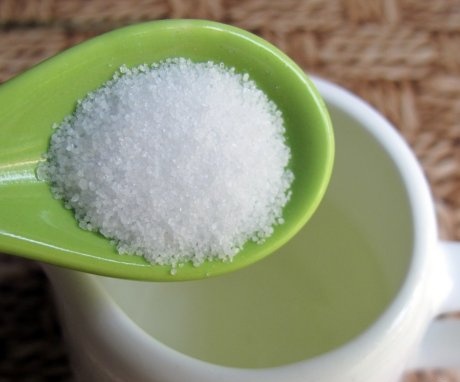Properties and applications of succinic acid for plants
Succinic acid is a product that is obtained from the extraction of amber. It is processed and in the process an acid is obtained, which is released in the form of a crystalline powder or tablets. Amateur gardeners and flower growers are familiar with this drug and are often used for plants. Succinic acid is indispensable for plants, especially if it is necessary to increase resistance and strength. With its help, houseplants will delight with lush leaves and abundant flowering.
Content:
Properties of succinic acid
A substance such as succinic acid is present in all plants and is an important component for good growth and development. When adding this substance to the top dressing the effect is observed practically at 2-3 weeks. Due to the fact that indoor plants have limited nutrition, the popularity of succinic acid among breeders potted flowers very large.
Thanks to succinic acid, you can:
- Regulate the growth of the plant, as well as accelerate it with an increase in the dose of the substance.
- It should be borne in mind that succinic acid is not a separate feeding agent.
- It can be applied alone or mixed with other fertilizers and nutrients. If this substance is applied together with nitrogen-containing fertilizers, then it is possible to protect the plant from excessive accumulation of nitrogen. The latter can lead to poor flowering, but abundant and dense foliage.
- Also, succinic acid improves the processes of chlorophyll synthesis and the assimilation of dressings, which are introduced in the spring for indoor and ground plants.
The addition of succinic acid along with watering improves the microflora of the soil in the pot and helps to remove toxins that can accumulate in the plant. In addition, the plant becomes healthier and more resistant to various adverse environmental conditions. Using this drug, you can not be afraid to harm the environment, animals or people. Succinic acid is completely natural and safe.
Another great advantage of succinic acid is that even in very small dosages, it brings great benefits to the plant.
And if the amount of a substance is mistakenly more than necessary, then only the required amount will be absorbed, the rest is used by microorganisms. However, you should not regularly make exorbitant doses, the amount should be such that is necessary for this type of plant.
It is also recommended to wear gloves when working with succinic acid. If the substance gets on the mucous membrane, irritation and itching may appear. In this case, rinse the damaged area with copious amounts of water.
The use of succinic acid for plants
Succinic acid is used for plants quite simply, since it dissolves easily in plain water. It should be applied to the ground no more than 1 time in 2 weeks.
To use succinic acid, prepare an aqueous solution:
- For this, 2 g of the substance is diluted in a small amount of warm water.
- Further, the amount of water is increased in the ratio of 1 or 2 liters of water per 2 g of the substance.
This solution is suitable for three days after preparation. After the expiration of this period, a decomposition reaction occurs.Therefore, it is worth preparing the solution in small quantities for a single use.
Succinic acid not only introduced together with top dressing, with the help of it you can perform many processes related to gardening and floriculture. In order to seeds sprouted faster and in larger quantities they are soaked in a solution of succinic acid for a day. After that, they are dried for 20-30 minutes and planted in the ground. Some seeds can be left in the solution until they hatch. In the same way, the root system of young plants is strengthened. They are kept in solution for 40 minutes, dried a little and planted in the ground.
Rooting of cuttings is much faster, and the roots grow strong if the cuttings are kept in a solution of succinic acid for a day, immersing their lower parts by 2 cm in liquid.
After that, you can proceed to the rooting process in its usual mode. So that new shoots appear on the plant, it is recommended to spray the stems with a solution once every 2 weeks. Succinic acid can help save a dying plant. To do this, it is necessary to prepare a solution with a stronger concentration of 25 grams per 1 liter of warm water. Spray the diseased plant with the resulting solution and water the soil. Observe for 1-2 weeks. Repeat the procedure if necessary.
Amateur gardeners spray with a weak solution of succinic acid fruit plants... Add 2 grams of the substance to 20 liters of water. During the period when buds appear on tomatoes, the process is carried out 3 times at weekly intervals. In order to potatoes sprouted better and brought a good harvest, the tubers are treated with the same solution before planting. After processing, they can be covered with foil for 1.5-2 hours for the best effect.
More information about yatnaric acid can be found in the video.










